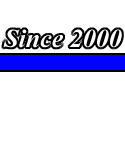

 |
|
|
Main
Video Games Interactive
Forums Hosted Sites
|
By Dojo Master Introduction: The Game Boy Double Dragon series has a downward spiraling pattern in game play. Double Dragon II was worse than Double Dragon I, and this version is by far the worst I've ever played. The arcade game wasn't that great to begin with, and this game is so impossibly hard that you'll probably never see the end. This game is probably the worst port of DD 3 in existence.
Graphics: C The graphics are remarkably similar to the arcade game, minus the color. Billy, Jimmy and the rest of the cast have the same look as their arcade counterparts, but everyone is obviously shown in different shades of gray. Unfortunately, it's impossible to improve on an arcade game that is being ported to an 8-bit monochrome system. Whereas the graphics themselves are fairly well translated from the arcade, the levels are still dull and actually incomplete when compared to the arcade game's levels. The only good thing, if you want to call it that, is the fact that you can face three enemies at a time rather than two, which is a surprise for this system's limited hardware (the NES games would only allow you to face two enemies at a time).
Sound: D Another downward spiral in the Game Boy series. The music is just horrible. I would compare it to something found on a Tiger handheld. It's more annoying than anything else, but luckily, the game allows you to instantly turn off the music simply by pressing the select button. This was perhaps realistic foresight by the developer, but nonetheless, this is terribly ported music from the unspectacular soundtrack of the arcade game.
Enemies: D- This is the worst part of this game. The enemies are too difficult even for advanced gamers. This stems from the fact that enemies run around aimlessly while unleashing unavoidable jump kicks. There is absolutely no way to defend against these erratic attacks and the enemies generally use aerial attacks instead of the two ground-based attacks (punches and kicks). The game suffers further because of the enemy attack patterns. Multiple enemies attack you at once, and generally, your only chance to land your own attacks is after you've been knocked down. So, instead of coming up with a logical defense, you're stuck in a game of tag. That is to say, the entire game plays out like this: enemy "X" knocks you down with a jump kick, then you knock him down with a jump kick. It's tit-for-tat, and it simply demolishes your life bar worse than even the NES Double Dragon game did with its no-stun problem. And if that wasn't bad enough, punches and kicks are entirely useless. Your only hope is to jump kick throughout the entire game or waste your credits on a sub-par weapon. The same enemies are seen here from the arcade game. However, the developers didn't include the extra fighters (Roney, Seimei and Masoa). Sonny isn't here either because there is no three-player mode.
Weapons: D The ridiculous shop system is back and players get two coins to spend per mission. There are two weapons that can be purchased in the store: the nunchucks and the sword. Both are useless because they're about as useful as jump kicks (though with a smaller range), and smart gamers will need the coins to buy more lives and energy in order to finish the game anyway.
Controls and Moves: D The B button kicks and A punches. Both are useless, as stated before. Punches and kicks are just too ineffective to deal any successful damage, and you'll get clobbered if you try to use them anyway. The wall kick can be performed at any time but it doesn't help anymore than a standard jump kick. You can buy the cyclone kick from the shops, but it's only as effective as a jump kick because unlike in the NES versions of Double Dragon II and III, this game's cyclone kick doesn't hover at the top of the jump. Therefore, it's a waste of money and a massive let-down if you've played the NES sequels. There is no ability to run.
Modes: D One player or two player. I've never played the two-player mode, but I'm sure it doesn't help.
Conclusion/Overall: D- This game is the result of several setbacks including: the fact that the game was not programmed by Technos, that the Game Boy is a limited set of hardware that almost never improves upon a ported game, and that the game was essentially a downgraded port of the horrible arcade game. The biggest mistake with this game was the illogical choice to port the arcade game over the NES game. Several NES games were ported to the Game Boy or reworked for the handheld since the system was essentially a portable, monochrome NES. Therefore, Double Dragon III: the Sacred Stones should have been developed into a workable Game Boy version. That's why I purchased this game as a kid. I thought I was getting Double Dragon III: the Sacred Stones. Boy, was I in for a surprise! This was a terrible choice by Acclaim. An awful port of an awful game makes for a horrendously terrible game.
|
||||||||||||